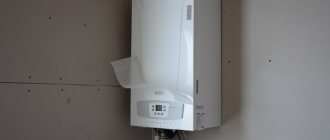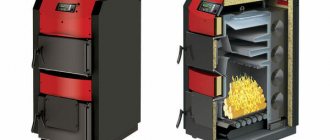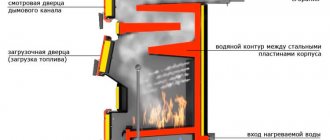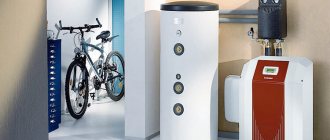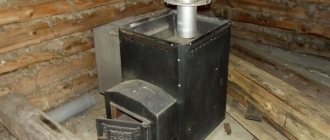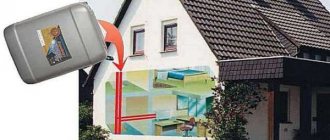The best collapsible ovens
Berel-360
"Berel-360" is a steel product suitable for cauldrons with a volume of 8 liters. The wall thickness is 3 mm. "Berel-360" has a thermal paint coating that can withstand heating up to +700 degrees. There is an ash drawer and an ash pit, thanks to which it will be not only clean but also safe during operation. The manufacturer has provided an external fuel channel, so now you can easily use long firewood for burning. The Berel-360 firebox has an inclined door that will close on its own. It is also possible to rehang the door, thereby changing the opening side for greater comfort. On the bottom of the “Berel-360” there are additional stiffening ribs that will prevent the product from deforming during operation. To prevent the smell of smoke during cooking, there is a collapsible chimney, its height is almost 2 meters.
The oven diameter is 36 cm and the weight is 24.7 kg.
The average cost is 11,000 rubles.
Berel-360
Advantages:
- Compact size;
- Durable design;
- Self-closing door;
- Comfortable handles.
Flaws:
- Suitable for 8 liter cauldrons only.
Kazanka-370
This model is made of sheet steel. Its thickness is 3 mm. “Kazanka-370” can be used not only as a stove for a cauldron, but also as an outdoor fireplace. Although this model has a simple design, it is very convenient and reliable in operation.
The size of “Kazanka-370” is 37*52 cm. And the weight is 13.9 kg. Suitable for 8 and 12 liter cauldrons.
The average cost is 3,000 rubles.
Kazanka-370
Advantages:
- Compact size;
- Collapsible design;
- Comfortable handles;
- Can be used as an outdoor fireplace.
Flaws:
- There is no door.
Kazan paired with tandoor
By deciding to combine a cauldron with a tandoor, you can get a very good stove. Such stoves are even available for sale. When purchasing a tandoor, you can equip it with a boiler, as well as stands for it.
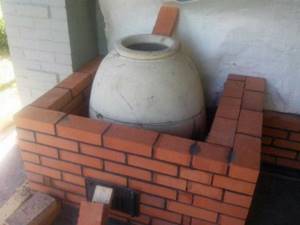
If you have a tandoor, but you can’t buy stands for the boiler, you can build them yourself.
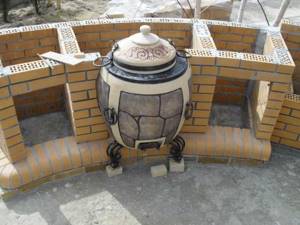
To do this, you will need strong iron reinforcement, from which you will first need to build a base; for this, the material bends around the tandoor and is firmly fixed. Next, the legs for the cauldron are made.
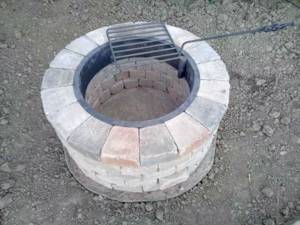
Selection rules
Considering the wide variety of stoves designed for cauldrons, the topic of their selection deserves special attention
First of all, it is important to choose the right size of the product. For a boiler with a volume of 10–20 liters, a design that is waist-high for an adult is suitable
If you plan to use larger dishes, using such high ovens will be inconvenient.
The next point is the material. All the advantages and disadvantages of brick, metal, clay, cast iron should be taken into account. The first option is not suitable for those who want to become the owner of a mobile device. And the second one is not suitable when a multifunctional oven is required. Only in the brick version, a smokehouse, barbecue, brazier and other useful additions are simultaneously provided.
If you plan to take the stove outdoors, it should be metal, preferably steel. The suitable thickness of the sheets used for its walls is at least 3 mm. However, this model will not be suitable if the stove is used frequently, because thin metal burns out quickly enough and cannot be repaired.
Another important nuance is that the size of the cauldron matches the size of the hole in the oven. It is optimal to purchase everything in one place, from one manufacturer. As a last resort - first the cauldron, and then the fryer.
About the pot
Before moving on to the description of stoves, let's touch on the pot. For a cauldron, it must have 4 “ear” handles. “Two-eared”, even if the handles are wide, has the annoying property of spilling the brew into the fire, seemingly without any apparent reason. Next, the depth of the pot:
- For pilaf in a brick oven - deep, the depth is not less than the internal diameter along the rim. The profile of the inner surface is approximately parabolic. Wall thickness - from 4 mm for a 6-liter boiler to 20 mm for a 120-liter boiler.
- For pilaf and other oriental dishes under a modern oven (see at the end) - relatively shallow, about 1/3 of the diameter in depth. It is best to use a standard boiler.
- For dishes with smoke - hunting-tourist-fishing, deep, with almost vertical (5-10 degrees from the vertical) walls. The bottom can be either rounded or flattened. Material – cast iron is better, but aluminum is also possible.
- For stewing, cooking, boiling - flattened (depth approx. 1/3-1/4 diameter) and with a flattened bottom.
Video: about choosing a cauldron
Design Features
The classic cauldron has a semicircular bottom and thick walls; food in it does not burn and does not get stuck in the corners, due to the lack of such. Such utensils are used not only for pilaf, but also for preparing many other meat and fish dishes. Products are not the only thing that affects the taste of the finished treat. The method of preparing it is no less important, which is why experienced cooks prefer to use a special device for these purposes. In appearance, the cauldron stove is similar to other models, but unlike them, it has a hole. The cast iron cauldron is placed inside, at a height of 2/3 from the top point of the structure.
A special stove for a cauldron has a number of advantages:
- Food does not burn even without adding oil.
- The fireplace is protected from the wind and retains heat for a long time.
- It’s easy to make a stove with your own hands by choosing the best option for yourself from the list of materials suitable for this purpose.
The size of the recess in the oven should ideally match the parameters of the cauldron. In a wide opening, the boiler will heat up unevenly, and a narrow opening will create inconvenience when placing dishes. As a result, in a stove purchased or made independently, it is possible to use only one size and shape of a cauldron - this feature is considered the main disadvantage of a narrow-profile hearth.

Which is the best bottom for a cauldron - flat or round?
Which cauldron is more convenient - with a flat or round bottom? The most delicious dishes come out in hemispherical pots, since they ensure uniform heating of the food and make it easy to mix all the ingredients.
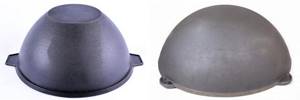
Flat and round bottoms of cauldrons The choice of the shape of the cookware is interconnected with the cooking method. Classic models with a rounded bottom are ideal for pilaf, but are more suitable for stoves and fires. In an ordinary kitchen, such pots are inconvenient. For a gas stove, use round or oval-shaped dishes with a flat bottom. For induction panels there are product lines with a special bottom.
About gas cauldrons
Gas cauldron
For regular pot cooking, the flame is simply a source of heat. Therefore, when choosing for yourself, you need to immediately consider the option of purchasing a gas cauldron without going through any complicated frills. There are many models on sale, from the most utilitarian to quite technically complex complexes with a set of separate gasifiers for different types of liquid fuel, incl. and processing, see figure on the right. The simplest gas stove for a 3-5 liter boiler costs 1800-2500 rubles, and omnivorous 6-15 liter boilers cost from 6000-7000 rubles. This is cheaper than any construction and can be justified not only for picnics.
Operating conditions for cast iron stoves
A cast iron stove is the most suitable option for installation on the site, since it combines the following capabilities:
- easy movement of the unit from one place to another;
- stability and safety during operation;
- saving on fuel (wood) due to a closed firebox.
On a cast iron fireplace, in addition to traditional dishes cooked in a cauldron, you can cook fish, kebabs and other delicious foods.
The design of a cast iron stove is similar in appearance to a cylinder with a bottom , but with an open top. The cast iron unit is equipped with legs and a door for easy combustion. Chimneys for cast iron structures can be of three types:
- pipe;
- in the form of small triangular cutouts in the upper part of the cylinder;
- grate
The price of a cast iron unit directly depends on the thickness of the material and the complexity of the purchased structure. The most expensive on the market are metal and cast iron products, slightly cheaper are those made of stainless steel, and other types are quite inexpensive. It is not recommended to purchase very cheap devices, since their metal quickly burns out, making further use of the product impossible. Cast iron stoves are the most popular because they retain heat for the longest possible time, and their only drawback is their heavy weight.
Proper care and storage of the cauldron
Don't look at the fact that these utensils look solid and rough. Although this is a bulky dish, it needs to be treated with care and maintenance. If you properly care for the pot, it will serve for a long time and delight you with delicious dishes, because over time the taste of food only gets better.
After cooking, a lot of fat remains inside. It is better to get rid of it without the help of dishwashing detergents. Detergents remove the protective lash that serves as the non-stick coating. If food is stuck or burnt, soak the container for a while. Then scrub with a brush, rinse with water and dry with a towel.
DIY oven
Before starting work, you should create a drawing of the future furnace. Here you need to decide on the size of the utensils used, display the location of the necessary holes, and do not forget about handles and additional accessories that will be needed in the future.
When the drawing is ready, you should take care of the necessary materials and tools. The materials you will need are a pipe with thick walls, a chimney pipe, a metal plate to create the bottom, corners for handles, legs and additional elements. Tools you will need are a drill with various drills, a grinder, a welding machine, a hammer and a level. You should also not forget about protective equipment when working.
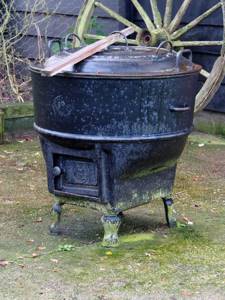
When everything is ready, you can begin assembling the structure. In this case, you should not deviate from the drawing. The primary assembly is also done first. Here we check the holes made in the pipe and their compliance. If everything goes well, then assembly begins using welding. Please note that the ignition hole should be 10-15 cm above the bottom. The chimney hole should be 10 cm below the top base and it should be the same diameter as the chimney. When installing the legs, do not forget about the stability of the structure, and their height and number depend on the wishes of the master.
When the assembly is completed, a test firing should be carried out. This way you can identify shortcomings and correct them. Afterwards it is recommended to cover the structure with fireproof varnish or special paint.
Location options
In cases where a regular cauldron stand is used, made, for example, from a pipe, its location is obvious. Due to its mobility, it can be easily installed in the yard, on the terrace, you can take it with you outdoors and place it anywhere in the open air. As for stationary models:
- Stoves with a wide chimney should be placed in an open area under a canopy or in a personal plot.
- If there is a narrow chimney, the product can be installed in a gazebo, on a veranda, in a summer kitchen, or in a barbecue house.
When installing a stove under a cauldron, it is necessary to take into account the wind rose and nearby buildings. Smoke should not enter residential areas. You should also pay attention to vegetation. Nearby trees and shrubs may catch fire, or the fryer will simply destroy them.
There must be a strong foundation under the stove. This does not apply to simple structures, such as a metal taganok. Massive cast-iron products will certainly sag, so they require a reinforced concrete base with a thickness of at least 10 cm.
In accordance with fire safety requirements:
- The oven should not be located near flammable substances.
- Particular attention should be paid to the issue of smoke removal.
- Outdoor buildings require waterproof coatings.
- The first use of the stove is allowed no earlier than 3 days after installation.
All metal parts of the structure are installed only after the solution has dried. Under their weight they deform the product. The operation of such a stove is unsafe.

The stove for the cauldron should be placed in an open area
Materials
Stoves for cauldrons are made from three main materials, which determine their main characteristics:
| Material | Design Features | Advantages | Flaws |
| Metal | The durability of the entire product depends on the thickness of the material. The raw material used is sheet steel, sometimes old, empty cylinders | The cost of the stove is low, installation is easy, the products are comfortable to use | Deformed under strong and frequent mechanical stress |
| Brick | Such structures require the construction of a foundation and installation of a chimney. | Retains heat longer than others, suitable for using very large cauldrons | A ready-made brick oven is very expensive, and making it yourself is quite difficult |
| Clay | Many consider clay to be a relic of the past, which is why such ovens are the least popular | They are relatively cheap | Too primitive and fragile |
Stoves made of cast iron alloys for cauldrons are less commonly produced. They are very heavy, stable, and rust slower than steel. The material heats up quickly and cools down very little, which makes it possible to save fuel. Gas tagans have also become widespread. These are powerful, functional, yet compact and mobile devices.
Improvised stoves are often made from wheel rims. They do not have a long service life, but if necessary, the structure is reassembled. It is also common to find a stand for a cauldron made from a pipe. Any metal fragment of the desired shape remaining after construction work can be used as a raw material.
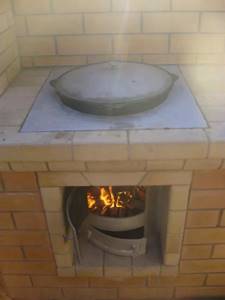
Brick

Metal
Tips for use
Whatever stove for the cauldron is purchased, when using it you will need:
- clean carbon deposits from the internal walls;
- break through layers of soot in the chimney;
- remove these blockages;
- Regularly remove ash from the firebox and grate.
Before starting work, the stove will have to be warmed up properly. The fact is that in factories a protective transportation coating is applied to the inside of the product, and it must be burned off. But even if the hearth is made of brick, it will still have to be calcined. This will allow:
- completely dry the wet bricks;
- increase the strength of the set solution;
- guarantee perfect dryness during work.
It is strictly unacceptable to use firewood in fireboxes designed only for the use of charcoal.
But even if the use of firewood is permissible, they cannot be lit with gasoline, kerosene and other flammable substances. Hence the conclusion: you need to use only perfectly dry logs.
And a few more important rules:
- Do not burn household waste, grass, leaves, dry plant stems, etc. in a cauldron stove;
- You cannot pour water to extinguish firewood or coals;
- You should not try to replace full-fledged heating devices with this stove by lighting a large fire.
Manufacturing steps and instructions
Scheme and dimensions
We take as a basis the use of a steel pipe with a cross-section of 250 mm and a furnace height of 450 mm.
Using these dimensions, make a drawing and you can start making a stove for a cauldron from a pipe with your own hands.
Diagram and dimensions of the stove for a cauldron made of pipes
Materials and their quantity
You will need to prepare:
| Material, thickness in mm. | Dimensions in mm. |
| Water pipe, cross-section 250 | Using a grinder, cut a length of 450 |
| Piece of sheet, thickness 4 | 255/255 |
| Corner with shelf 40 | 4 pcs 400 each |
| Door hinges | 2 pcs |
| For making handles | Steel strip 50/4 250 mm long – 2 pcs. |
To make a handle for the door, prepare a rod 6-8 mm thick and 200 mm long.
Tools
To make a stove for a cauldron from a pipe, you will need to prepare equipment and plumbing tools:
- welding machine;
- electrodes ANO-21 or MP-3;
- grinder with a cleaning and cutting wheel;
- electric drill with a set of metal drills;
- a set of locksmith tools;
- tape measure and marking pencil;
- a workbench with a vice or a small table vise;
Having prepared all the ingredients, you can start making a stove for a cauldron from metal with your own hands.
Making a stove
All work is divided into several stages:
Having cut the pipe blank to the required length, the edges are aligned with a grinder and a grinding stone. Then the burrs, especially the upper part of the structure, are cleaned with a file.
Important! If the cauldron does not sink to the required depth, you can cut out small segments at the top and bend the top of the pipe. At the same time, we ensure that the dishes are immersed to the required level. A sheet of metal for the bottom is laid out on a flat surface, a pipe is installed on top and distributed in the center of the base
Now the pipe is tacked in 4 places every 900. The correct installation of the pipe on the base is checked. The joint is welded in one pass
A sheet of metal for the bottom is laid out on a flat surface, a pipe is installed on top and distributed in the center of the base. Now the pipe is tacked in 4 places every 900. The correct installation of the pipe on the base is checked. The joint is welded in one pass.
Then the slag is chipped off and the quality of the seam is checked. The seam does not need to be completely sealed here, but it is better to weld the areas with burns and holes. The workpiece must be cooled.
Having marked from the bottom in a circle at a distance of 100 mm from the bottom where the legs from the corner are attached, they are installed after 900, one shelf is cut for better joining with the pipe and the leg is grabbed at an angle to the pipe of 250-300.
The lower shelves of the corner are cut so that the leg touches the floor surface flat. At the bottom, for the stability of the furnace, small pieces of sheet steel are welded. These nickels are scalded only on the inside.
- The door hole for storing firewood is marked from the bottom. It can be made in different shapes. The simplest option is a rectangle made of a sheet of steel. But it is better to use a part cut from a pipe. Opening size – 150/200 mm. The door is hung on small hinges. A simple latch is made from a rod to secure it in the closed position and is welded to the door.
- From the strip you need to make handles for carrying the stove. To do this, mark 50 mm on each side of the workpiece, clamp it in a vice and bend it with a hammer. It is necessary to maintain an approximate bend angle of 900.
Then, having marked the mounting points on the sides of the pipe, they are grabbed. After making sure the handles are in the correct position, weld them to the base.
- Using a grinder and a file, all welding points and burrs on parts are cleaned. All protruding sections of the sheet along the bottom are first cut off, then the seam is processed with a grinder with a grinding stone.
- If desired, the stove can be painted with heat-resistant paint. To do this, you must first degrease all surfaces with a solvent.
- The stove for the cauldron made from a pipe is ready.
Making a chimney
On the back side you can embed a piece of pipe for the chimney. In this case, the smoke will escape through the pipe and will not sting the cook’s eyes. A hole is cut in the furnace along the diameter of the pipe using electric welding at a height of 150 mm from the top of the furnace.
Chimney
Then a bend is made from the pipe at 900. Having inserted it into the hole, 3 tacks are made, the correct position of the bend is welded and it is welded in 1 pass. Then a pipe 1.5-2 m long is put on it, at the top of which a protective canopy is installed. Now the gases are vented straight up.
Expert opinion Pavel Kruglov Stove maker with 25 years of experience
You can increase your traction in a simple way. At the bottom of the stove, drill a series of holes with a diameter of 8-10 mm for ventilation of the stove. But it is better to make an additional groove with a box. It will serve as an ash box and ash pit. In this case, they make servicing the stove easier and prevent coals from falling out of the holes.
Ready-made stove design for a cauldron made from a pipe

